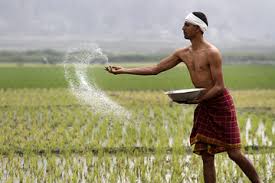
The Indian Meteorological Department (IMD) has started issuing block-level agricultural advisories on a pilot project to farmers in four states—Karnataka, Chhattisgarh, Andhra Pradesh and Telangana. The move is a part of government efforts to double farm income.
These twice a week agricultural advisories at block-level are aimed at helping farmers to plan better crop sowing and its management for higher yields.
The project launched a few days ago aims to double farm income in line with the Narendra Modi government’s target to double farmers' income by 2022 to end the divide between the rich and the poor.
A block is spread over 12 kilometer radius in a district which may have 5-6 blocks depending on its size. There are about 6,500 blocks in the country.
The IMD will extend agri advisories to Maharashtra, Bihar, Odisha later and cover all the states in a phased manner.
Earlier, the IMD had successfully implemented issuing the district level weather forecast since 2008.
At present, the IMD issues district level agri advisories in collaboration with state agricultural universities, Institutes of Indian Council of Agriculture Research and IITs covering all 660 districts across the country.
The same is also disseminated to about to four crore farmers in the country on their mobiles.
Last weekend, M Rajeevan, secretary at Earth Science Ministry (MoES), had announced that block-level agro-met advisory services were started for 200 blocks and about four crore farmers received updates on their mobiles. When contacted N Chattopadhyay, head of the IMD’s agricultural meteorology department told Financial Chronicle that soon more states will be added to the pilot project to take the block-level tally to over 300.
He said at present, IMD was taking help from the automatic weather stations run by Karnataka, Chhattisgarh, Andhra Pradesh and Telangana in their respective states to prepare experimental block-level agro-met advisories for farmers.
“Using data from the automatic weather stations and high-resolution forecasts for consequent five-day period, crop-status and crop-stage advisories are being prepared and issued for these blocks on an experimental basis,” Chattopadhyay pointed out By 2020, the IMD aims to cover the maximum number of blocks across the country, he said.
Chattopadhyay said the IMD is exploring integration of its 26 doppler radars customised information with the mobile numbers of farmers to enable them to get information on upcoming extreme weather events within minutes and ultimately save the crop loss.
He said grape growers in a block in Nashik, the country’s largest grape bowl, can cover their vineyards with nets and save their precious cash crop when hailstorm is expected. Chattopadhyay said the pilot project was running on expected lines as IMD was collaborating with National Remote Sensing Centre and Space Application Centre on crop status, soil moisture, pests and diseases etc through satellite for micro-level observation.




